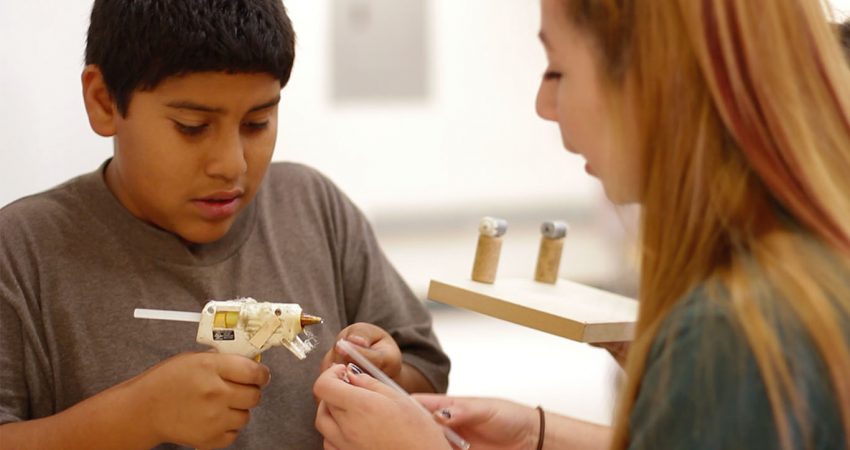
By Katie Van Horne - June 2011
PAPER CITATION
Baram-Tsabari, A. & Yarden, A. (2009). Identifying meta-clusters of student’s interest in science and their change with age. Journal of Research in Science Teaching, 46(9), 999–1022.
In this study, the authors sought to characterize student interest in science across different age groups using their voluntary self-generated questions. The nature of the questions submitted by students to informal science settings like TV shows or Ask-a-Scientist websites were used as an indicator of student interest. The topics addressed in 6,000 questions were grouped into six clusters. Younger students (grades K-9) showed interest in zoology, technology, and astrophysics while older students (grades 10–12) showed interest in physics, chemistry, and biology. This shift of interest to science topics covered in school is relevant to informal science learning as informal spaces have the opportunity to provide advanced and supplementary experiences beyond science in school with the goal of expanding on established interests and also providing learners with opportunities to encounter other ideas and generate new interests.
For each of the 6,000 student-generated questions, the authors recorded the setting, language, user age, user gender, and country of origin. Then, they coded each question on four levels: topic of the question (e.g., biology, physics, chemistry, etc.), cognitive level of the question (e.g., factual, explanatory, methodological, etc.), reason for raising the question (e.g., spontaneous, imposed), and properties of the object of interest in the question (e.g., the order of magnitude of the object in question). After coding each question, they used a cluster analysis to unravel the hidden trends in the data. Then, rearranging these clusters by age, the authors generated six meta-clusters: three typical for younger students and three typical for older students.
Younger students (K-9) showed interest in (1) zoology (e.g., Does a whale have a belly button?), (2) technology (e.g., How to build an Internet site?) and (3) astrophysics (e.g., Is there life on other planets?). Older students (10–12) showed interest in physics, chemistry, and biology. While all of the older students’ questions were self-generated, over a third of the questions came from school assignments. The older students’ questions fell into clusters of (1) nano-scale and highly cognitive (e.g., How is it that in an atom’s nucleus the protons do not repeal each other?), (2) human biology specific to the user (e.g., Why do our fingers and toes shrivel when in water for a long period of time, but the rest of our body does not seem to change?), and (3) school-assignment questions (e.g., I am doing a science project on paper towels and I was wondering how I can find out how much each paper towel will hold; how can I measure it?).
Through analyzing students’ voluntary self-generated questions, the authors found a shift in the type of questions asked across ages. The questions asked by younger students were the result of genuine interest and they showed a range of interests. This observation is supported by several other studies that show young learners developing and shaping scientific interests. But, in elementary education, usually, there is no support for these dynamic and complex interests. In contrast to younger learners, older students were less likely to ask questions on science topics not taught in schools. The authors report possible reasons for this change: (1) a natural change in interest or (2) a shift in attention and interest due to formal schooling. One interesting shift showed older students gaining interest in human biology while younger students showed interest in zoology. This interest is relevant to their lives and bodies, but is not necessarily supported in high school courses and this would be a place for informal science educators to capitalize on the student identified interest. In addition, one of the implications identified by the authors is that educators should provide learning experiences within expected interests of learners while integrating student voices through encouraging learners to ask questions about ideas and topics they are interested in as a way to focus on curriculum and learning endeavors.
Using online submission of questions to analyze student interest means that the sample of questions comes from self-selected participants who have access to internet and the websites.
Further Reading
Baram-Tsabari, A., Sethi, R.J., Bry, L., & Yarden, A. (2006). Using questions sent to an Ask-a-Scientist site to identify children’s interests in science. Science Education, 90(6), 1050–1072.
Baram-Tsabari, A., Sethi, R.J., Bry, L., and Yarden, A. (2009). Asking scientists: a decade of questions analyzed by age, gender, and country. Science Education, 93, 131–160.
Basu, S.J. (2008). How students design and enact physics lessons: Five immigrant Caribbean youth and the cultivation of student voice. Journal of Research in Science Teaching, 45(8), 881–899.
Basu, S.J., & Calabrese Barton, A. (2007). Developing a sustained interest in science among urban minority youth. Journal of Research in Science Teaching, 44(3), 466–489.
Furman, M., & Calabrese Barton, A. (2006). Capturing urban student voices in the creation of a science mini-documentary. Journal of Research in Science Teaching, 43(7), 667–694.
National Research Council [NRC]. (2009). Learning science in informal environments: People, places, and pursuits. Washington, DC: The National Academies Press.




